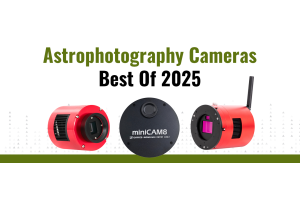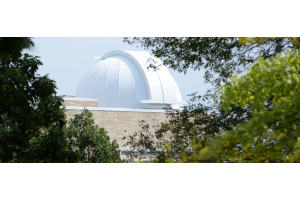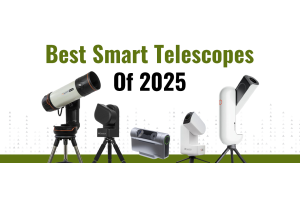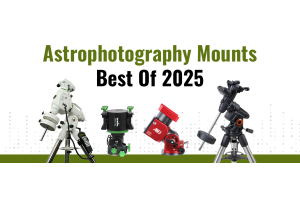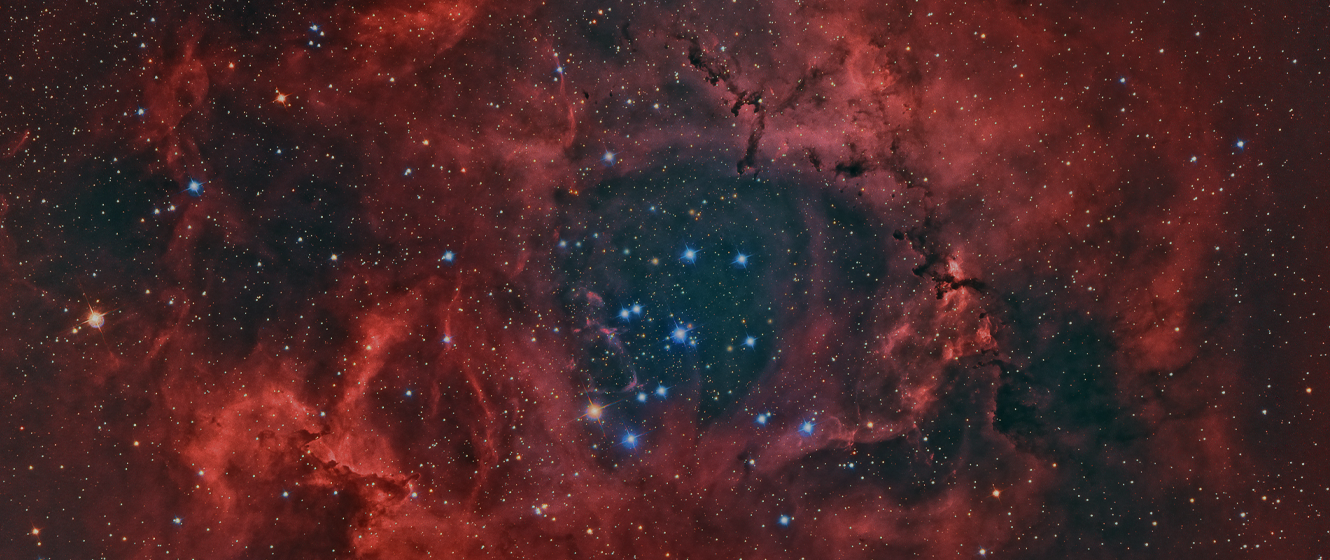
Did you know you can control your telescope with your computer instead of a hand controller? Or that you can automate your entire astrophotography process, allowing you to sleep while your telescope is capturing those precious photons? The trick is through software! At the very least, software is needed to stack your images. Stacking results in an increased SNR, or signal-to-noise ratio. But some amateur astronomers are able to automate their entire astrophotography setup. From telescope control to image capturing, amateur astronomers can produce beautiful images of the night sky while hardly lifting a finger. The result is some of the most beautiful images of the night sky! This article will cover some of the best astrophotography software you can use in 2023.
Please note that this article is not an all-inclusive list, nor does it provide step-by-step instructions on how to get your gear working with all this software. We strongly recommend reading the documentation for each software before downloading.
Best Planetarium Software for Telescope Mount Control
Understanding ASCOM (Windows)
To best use software to control your telescope, you need a universal driver that will communicate with a wide variety of mounts. For Windows users, you’ll want to use ASCOM (for Linux or macOS users, read on). This driver will aid in communication from your mount to your computer for Celestron, iOptron, Sky-Watcher, Orion, and other mounts. Before downloading software, make sure that you have all the drivers necessary for your computer to communicate with your mount! You can download ASCOM by checking out their website and following the installation instructions, although some software may already include ASCOM in their installation.
Understanding INDI (macOS, Linux)
INDI is a similar driver to ASCOM, but its purpose is geared towards Mac and Linux users (although a Windows port is in progress). The INDI driver will enable control of most of your astronomy gear such as your camera, mount, focuser, et cetera. INDI will enable telescope control through Mac and Linux compatible software such as KStars, Stellarium, Cartes du Ciel, et cetera.
Stellarium
(Linux, Windows, macOS)
Stellarium is a free, open-source planetarium software that enables you to easily look at any object in the night sky available for Linux, Windows, and macOS. Setting up your telescope with Stellarium is very easy: simply open the Telescope plugin, connect your mount via ASCOM, and you’re good to go! From there, all you simply need to do is point towards a series of stars of your choice to sync up the mount with the night sky. Stellarium is by far one of the best choices as far as being open-sourced, an excellent user interface that’s also easy to understand. You can also simulate your camera or eyepiece field of view under the “oculars” tool on the right hand side of the screen.
CPWI
(Celestron-only, Windows)
For Celestron and Windows users, CPWI offers perhaps the best option for computer control of your telescope. CPWI offers you the ability to easily slew to objects, a directional controller, the ability to perform an All-Star Polar Alignment, PEC control, and operation of optional accessories like the StarSense AutoAlign & Celestron Dew Controller. CPWI will work with mounts like the Celestron AVX, CGEM II, CGX, CGX-L, NexStar SE, and more.

Cartes du Ciel
(Windows, macOS, Linux)
Cartes du Ciel is our pick for free software that enables the operation of all types of telescopes. Cartes du Ciel has built-in ASCOM control for Sky-Watcher, Vixen, and Orion mounts (Using ASCOM EQMod), iOptron mounts, and Celestron mounts.

KStars
(Windows, macOS, Linux)
KStars is another free planetarium software that works with macOS, Linux, and Windows. For Linux and macOS users, the biggest advantage here over Cartes du Ciel is that KStars has its astrophotography software automation package built into it (known as EKOS). The INDI driver to control your mount is bundled in with your installation of KStars.
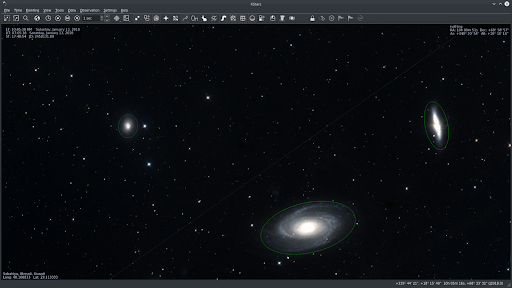
Best Software for Image Capturing
Tired of being outside the entire night for your astrophotography? Want to be able to sleep while you’re imaging? Then automating your imaging process is the way to go!
NINA
(Windows)
Although NINA (Nighttime Imaging ‘N’ Astronomy) has been around for some time, some of the most recent updates to NINA over the past few years make it one of our favorite software for astrophotography. NINA offers complete control of your entire imaging setup, including camera control (DSLRs & CMOS), integration with guiding software like PHD2, automated filter wheel control for QHY and ZWO filter wheels, planetarium software, automated meridian flips, support with Rotators, and much more. NINA also offers plate-solving, framing assistance, and the ability to get the right exposure for flats. What’s more, NINA offers all this while being completely free and open source! However, be aware setting up NINA can be a steep learning curve that requires integration with multiple different pieces of software.
TheSkyX Professional
(Windows, macOS, Linux)
Looking for a platform-agnostic all-in-one option? The SkyX is another great planetarium and image capturing software that you can use to control your mount. Unlike the other software mentioned, SkyX Professional is an all-in-one alternative. With TheSkyX, you can control your mount using its built-in planetarium tool, control your camera using the Camera Control add-on, plate-solving, autoguiding, live stacking, plan mosaics, autofocuser, et cetera. With TheSkyX Professional, you can control most mounts on the market, such as Astro-Physics, Celestron, iOptron, Meade, Sky-Watcher, and more. However, be aware that TheSkyX is by far one of the most expensive options you can purchase.
EKOS
(MacOS and Linux)
For those who download KStars, you’re in luck: included with KStars is the EKOS imaging suite. Included is a built-in native autoguiding function, plate-solving using astrometry.net, auto-focus control, flat assistance, sequencing control, and more. Additionally, Kstars/EKOS is free and designed specifically for MacOS and Linux users.
ASI Air
(Smartphones and Tablets)
Should you purchase a ZWO ASI Air/Air+, you’ll be able to control your ZWO camera and guide camera using the dedicated ASI Air AppASI Air App! The ASI Air app can handle plate-solving, autofocusing, polar alignment, autoguiding, and more all through your smartphone - no laptop necessary!

Best Software for Stacking & Post-Processing
DeepSkyStacker
(Stacking only, Free)
For stacking your images, one of the most well-known and easiest to use stacking software is DeepSkyStacker. DeepSkyStacker enables you to quickly stack your light, dark, flats, and bias frames. DeepSkyStacker is both fairly easy to use and very powerful - we strongly recommend checking it out should you be new to astrophotography! For more information on how to use DeepSkyStacker, click here to check out our article.

Siril
(Windows, MacOS, Linux, Stacking & Post-processing, Free)
Siril is a platform-agnostic astrophotography post-processing tool that allows you to calibrate, stack, and process your astrophotography software. Siril is the best free option for stacking and image processing.

Sequator
(Windows, Stacking & Post-processing, Free)
Sequator is another option for stacking and some quick post-processing of your astrophotography frames. Sequator is by far the most user-friendly stacking software out there, although its ability to do much more is limited. If you’re just looking to stack your images, then Sequator will work for you!

PixInsight
(Windows, MacOS, Linux, Post-processing)
PixInsight is our pick for the best software for post-processing. Although it’s fairly expensive, its ability to extract gradients from light pollution, noise reduction, color calibration, color combination, and to create masks is absolutely unmatched. PixInsight is the most advanced image processing software on the market and is available on Windows, Linux, and MacOS. Additionally, PixInsight is regularly updated, although it comes with a steep learning curve. Check out our basic post-processing tutorial using PixInsight!

StarTools
(Windows, macOS, Linux)
Another option for post-processing that you may consider is StarTools. It offers many of the same features as PixInsight, but with a more user-friendly interface and a less steep learning curve. If you don’t have the time or desire to learn absolutely every way to process your image, consider purchasing StarTools.

Other Software
PHD2
(Windows, macOS, Linux)
For many, PHD2 is the go-to software for autoguiding. Autoguiding is absolutely essential to take long exposures, as it will correct for the small errors in your mount's tracking to take 5-10+ minute exposures of the sky!
This Article was Last Updated on 8/24/2023







